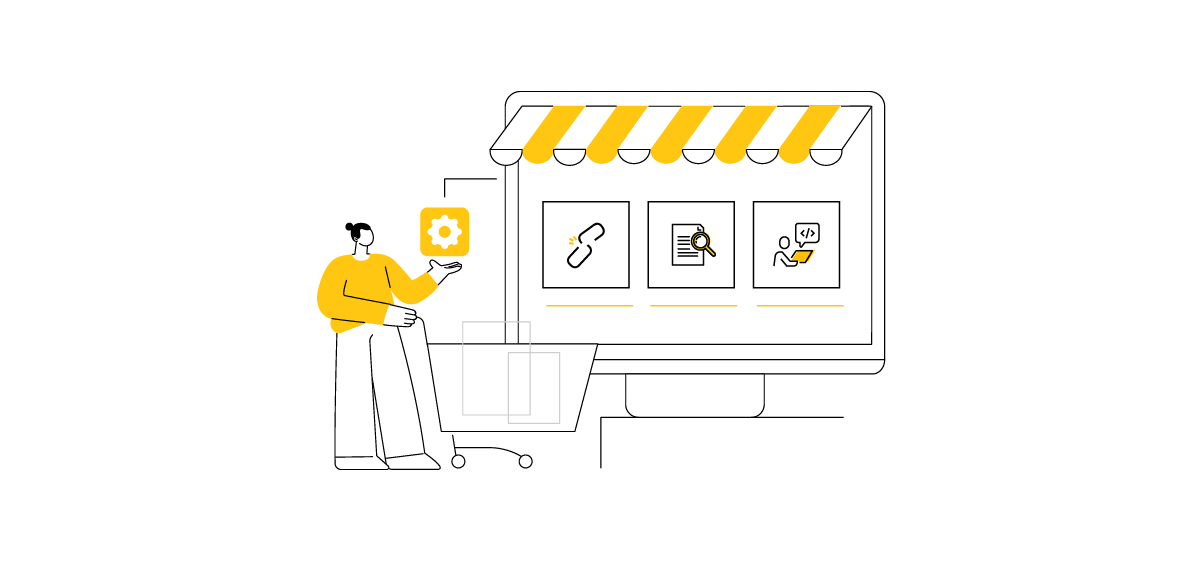
Table of Contents
What are software tests?
Software testing is integral to the SDLC (Software Development Lifecycle), enabling companies to create reliable, efficient, and user-friendly applications. In fact, it’s hard to imagine developing any software-based product without checking it with lots of precise tests. Why is this so important? Imagine building a car instead of software. The car has an engine, transmission, steering, brakes, cooling system, seat belts, headlights, and so on. The car is the sum of these subsystems. In turn, each has specifications and requirements that define expected functionality, tolerances, and interfaces with the rest of the system. At some point, all these systems are brought onto the assembly line and bolted together without any kind of testing. The test driver enters a car that fails to start or move forward. Which subsystem is at fault? If no unit testing was done before integration, finding the problem is much more complicated. Similarly, the software is a collection of independent components. String libraries, math libraries, user interface toolkits, etc., can be compared analogously to gearboxes, brakes, and headlights. The quality of a system built from these components is no better than that of the least tested component. This means that as early as the component writing stage, it is necessary to use unit tests to help make sure that no matter how the component is used, it will withstand whatever input and context it is subjected to. Like a car whose brakes were thoroughly (and regularly) tested by engineers before being delivered to the assembly line to be bolted on, the same kind of thought process should be applied to software design. Testing isn’t done after all the parts are put together; software backed by testing according to a pyramid of tests assures that the subsystem components and system are in the expected condition.What is included in software testing methods?
The purpose of software testing is primarily to ensure that the software meets the quality standards set by the expectations of the team and stakeholders. However, it is impossible to test all capabilities in real life because business reality changes. In this case, the best that can be done to make test results meaningful is to perform short test cycles with quick feedback on the state of the product. To this end, QA specialists create a scope of testing that focuses on the most critical aspects of the product based on business needs. This is a general list of the parts of the product that need to be tested to achieve a reliable quality assessment. Finding out what testing types involve examining the product from different angles and specifying the types and kinds of tests to be prepared for the project. An additional step is to check whether the stakeholders verify the scope of testing. This helps to adjust deadlines and clarify any controversial points. Finding a product’s or feature’s business purpose is often a clue as to where to focus. Therefore, from the very beginning of project analysis and planning, there is a need for regular input from the product owner as to why the company wants to implement the feature and who the target audience will be.6 steps of a successful testing process in software development
Testing is an ongoing process in parallel with the software development cycle. It is important to start the software testing process as early as possible in the application life cycle and it should be integrated into the product development itself. Here are step-by-step instructions on how to initiate the testing process:1. Requirements analysis
The first stage of testing involves a thorough analysis of the software requirements. Testers work closely with the customer, product owner, and developers to comprehensively understand the software’s intended functionality, user expectations, and system constraints. This stage helps identify potential risks, dependencies, and testing objectives. Requirements analysis helps eliminate defects at a very early stage of software development. This is important because improperly specified requirements can cause many problems later in the SDLC.2. Test Planning
At this stage, the test manager develops a plan. Together with testers’ team decide what to focus on, how long it will take, and what tools or techniques to use. He prioritizes features, creates different scenarios to try out, and determines what resources are needed. Test planning also includes identifying the appropriate testing techniques, tools, and frameworks to use. This process ensures that testing is well-organized, efficient, and in line with overall project goals.3. Test Design
Now it’s time to create actual test cases and scripts. Testers think about all the steps to be taken, what results to expect, and what data to use. They try to consider as many different situations as possible, including extreme situations and negative scenarios, to ensure that the software has been tested from various aspects.4. Test execution
This is the point at which testing actually takes place. Testers run test cases, record what happens, and compare actual results with expectations. They can do this manually or automatically, depending on the project. Running tests helps detect defects, verify the software’s functionality, and assess its overall quality and performance.5. Tracking and managing defects
When problems or errors are discovered during testing, testers must document them. They note what went wrong, how serious the problem is, and work with the team to fix it. They use special systems or tools to track problems, monitoring progress before the software is ready. This step helps maintain transparency, accountability, and traceability throughout the testing and development cycle.6. Test reporting and analysis
At the reporting and analysis stage of software testing results, testers generate comprehensive reports showing what happened during testing. They summarize all activities, results, and what they found. They analyze the collected data, look for patterns or areas for improvement, and use this information to make decisions about the software’s readiness for release. This helps everyone involved understand the quality and performance of the software and make informed choices.
Types of tests in software testing
There are many types of software tests, which can be divided in different ways. One way is to divide them into the following categories:- White-box testing – testing code – paths, loops, conditions
- Black-box testing – testing based on interfaces provided by developers – functional, non-functional, regression testing
- Functional tests (e.g., unit tests, smoke tests, correctness tests, integration tests, white-box tests, black-box tests, user acceptance tests, regression tests)
- Non-functional testing (e.g. performance, load, volume, security, installation, penetration testing, compatibility testing, migration testing).

Benefits of software testing:
By conducting thorough and comprehensive testing, we can deliver high-quality software that meets user expectations, reduces risk, and drives business success.Here are some of the most popular benefits of testing:
- Early identification and correction of defects – minimizing problems and costs after product release.
- Confirm that the software works as intended – ensuring compliance and customer satisfaction
- Safeguard against unintended consequences of changes or updates with regression testing.
- Improve overall usability and user experience – increasing customer engagement and loyalty.
- Checking code compliance and functionality.
How software testing impacted customer’s business success?
One real-world example of a company that has successfully implemented software testing to achieve business success is one of our clients, LucaNet, a financial performance management solutions provider. VM’s testing specialists have implemented a comprehensive QA (Quality Assurance) process and test automation structure, which has yielded many positive results. In the first stage, VM’s testing team, together with LucaNet, developed a comprehensive and professional testing process, which was documented in the QA Handbook. It served as a comprehensive guide for software testing professionals and project teams, defining best practices, approaches, and techniques for testing various types of applications, including web and desktop applications. In establishing these guidelines, LucaNet aimed to promote consistent and effective testing practices, leading to improved overall product quality. In the second phase, a framework for test automation was implemented. After the proof-of-concept phase, the testing team proceeded with the implementation.Automated testing has brought a number of benefits to the company:
- Cost savings by reducing manual testing
- Faster feedback during the testing process:
- Resource optimization: With automated testing handling repetitive tasks, the QA team was able to focus its efforts on more complex and critical areas, improving overall productivity and efficiency.
- Greater accuracy: Automated tests accurately execute predefined scripts and procedures, eliminating the possibility of human error. This increases test accuracy and ensures consistent results, leading to greater confidence in software quality.
- Increased test coverage: Automation has enabled us to expand our test coverage to include performance or stress testing, enabling the company to test a wider range of scenarios, improving software stability and reliability.
- Faster error detection: Automated testing can be performed more frequently and efficiently compared to manual testing. In this way, we were able to detect bugs and problems in the software earlier in the development cycle. By identifying and resolving these issues earlier, we reduced the risk of critical problems reaching end users, resulting in more stable and reliable software.












